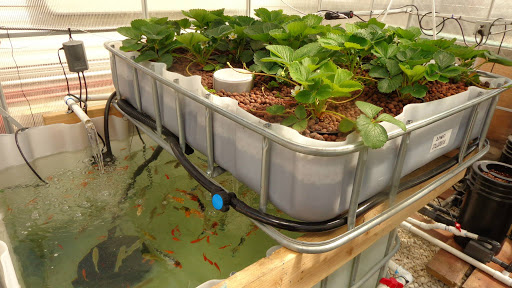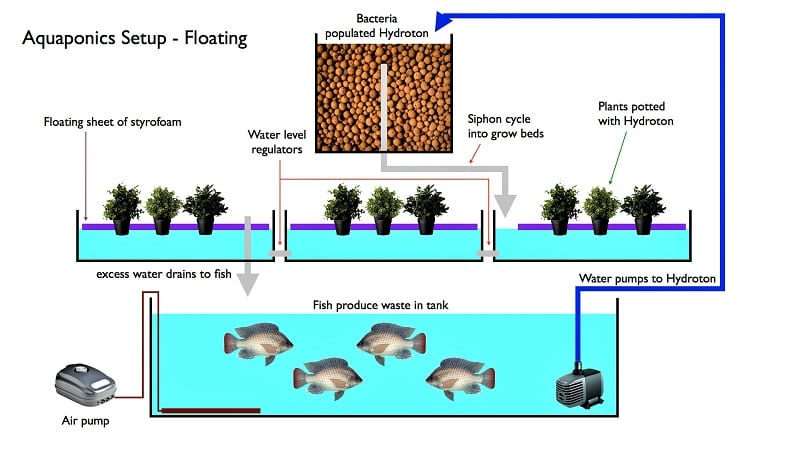Beginner’s Guide to Setting Up a Compact Aquaponics System
Hey there, green thumb wannabe! Want to grow your own food but don't have a ton of space? Well, buckle up because we're about to dive into the fascinating world of aquaponics! Think of it as a symbiotic relationship between fish and plants, where their waste fuels each other's growth. It's like a mini ecosystem right in your home, and it's surprisingly easy to set up, even for newbies like us. Let's get growing!
What is Aquaponics?
Aquaponics, in its simplest form, is the marriage of aquaculture (raising fish) and hydroponics (growing plants without soil). It’s all about recycling nutrients! The fish poop and ammonia in the water are broken down by beneficial bacteria, providing yummy plant food. The plants then filter the water, creating a clean, healthy environment for the fish. It’s a win-win situation!
Why Should You Try Aquaponics?
This isn't just some fancy gardening trend. There are some serious perks to building your own aquaponic system:
- Space-Saving: Perfect for apartments, balconies, or small backyards.
- Water Conservation: You use way less water than traditional gardening.
- Less Work: No weeding, no pesticides, and less need for fertilizer.
- Fresh Food: Enjoy delicious, homegrown produce all year round!
- Sustainable Living: It's an environmentally friendly way to grow food.
Setting Up Your Compact Aquaponics System
Now for the fun part! Setting up your aquaponics system is like putting together a giant LEGO set. You'll need a few essential components:
1. The Fish Tank
This is the home for your finned friends! For a compact system, a 10-20 gallon tank is a good starting point. Make sure it's leak-proof and has a strong filtration system. You can also use a pre-made aquaponics system with a built-in tank.
2. The Grow Bed
This is where your plants will grow! You can use a variety of materials, like:
- DIY: Build a grow bed using plastic tubs, IBC totes, or even recycled materials.
- Pre-Made: There are some fantastic pre-made grow beds available online or at gardening stores.
Remember, the grow bed needs to be big enough for your chosen plants and should have a drainage system for the water to return to the fish tank.
3. The Pump
This is the heart of your system! A submersible pump circulates the nutrient-rich water from the fish tank to the grow bed and back. You'll need a pump that's powerful enough to move the water efficiently but not too strong as to disrupt the roots of your plants.
4. The Filter
The filter is vital for keeping the water clean for your fish. It removes waste, debris, and excess nutrients. Choose a filter that's appropriate for the size of your fish tank. Some systems also include a biofilter specifically for the aquaponics setup.
5. The Plumbing
Connecting the fish tank, grow bed, pump, and filter requires some basic plumbing. You'll need tubing and fittings to create a closed loop system for the water to circulate smoothly. Don't worry, you don't have to be a plumber; there are many easy-to-follow instructions online.
6. The Media
The media in the grow bed provides a growing substrate for your plants. Here are a few popular options:
- Clay Pebbles: A common choice because they hold water well and promote good root growth.
- Expanded Clay Aggregate (ECA): Similar to clay pebbles, but with a larger particle size.
- Hydroton: Lightweight, porous material that's often used for hydroponics.
- Coconut Coir: A natural and sustainable option that retains moisture well.
7. The Fish
This is where the fun really starts! Choose fish that are hardy, compatible, and won't outgrow your tank. Some good choices for beginners include:
- Goldfish: They're relatively easy to care for and come in various colors.
- Koi: Beautiful fish with a strong appetite for algae.
- Tropical Fish: Great for a warm indoor setup.
Make sure to research the specific needs of your chosen fish, like their water temperature, diet, and social behavior.
8. The Plants
Now, let's get growing! Aquaponics is perfect for leafy greens, herbs, and vegetables. Some popular choices include:
- Lettuce
- Spinach
- Kale
- Basil
- Tomatoes
- Bell Peppers
Just remember, the plants you choose should be suitable for the size of your grow bed and compatible with your fish. Avoid plants that require a lot of soil or have deep roots.
Maintenance and Monitoring
Building your aquaponics system is only half the battle! To keep it thriving, you'll need to perform some regular maintenance:
1. Water Testing
Regularly test the water for pH, ammonia, nitrates, and nitrites. These parameters should stay within safe levels for both your fish and plants. You can buy water testing kits at most pet stores.
2. Feeding the Fish
Feed your fish a balanced diet of high-quality pellets or flakes. Overfeeding can pollute the water, so be mindful of how much you provide.
3. Cleaning the Tank
Clean the fish tank and filter as needed to remove debris and waste. This ensures a clean and healthy environment for your fish.
4. Harvesting Plants
The best part! Harvest your fresh produce whenever it's ready. This will encourage new growth and keep your system balanced.
Troubleshooting
Don't worry, even the most experienced aquaponic enthusiasts face challenges. Here are a few common issues and how to solve them:
- Cloudy Water: Check your filter, make sure it’s functioning properly. You can also add beneficial bacteria to help clear up the water.
- Algae Blooms: This can happen if there's too much light or nutrients in the water. You can use a shade cloth to reduce sunlight or adjust your feeding regimen.
- Fish Disease: Keep a close eye on your fish for any signs of illness. If you see any problems, isolate the sick fish and consult with a veterinarian.
- Plant Wilting: Ensure your plants are receiving enough water and nutrients. You may need to adjust the water flow or add extra fertilizer.
Remember, troubleshooting is all part of the learning process. Don't be afraid to ask for advice from experienced aquaponics gardeners or join an online forum.
Tips for Success
To make your aquaponic journey even smoother, here are some tips from the trenches:
- Start Small: Don't go overboard with a huge system right away. Start with a compact setup to get the hang of it.
- Research Your Fish: Learn about their specific needs and choose a species that’s suitable for your system.
- Choose the Right Plants: Consider the growing conditions and nutrient requirements of your chosen plants.
- Be Patient: Aquaponics takes time to establish and balance. Don't expect to see results overnight.
- Have Fun!: Growing your own food should be an enjoyable experience. Enjoy the process and celebrate your successes.
There you have it! Now you're equipped with the knowledge to embark on your aquaponics adventure. Whether you're an experienced gardener or a curious newbie, there's something magical about growing your own food in this self-sustaining ecosystem. So, get out there, build your system, and let the growing begin!




